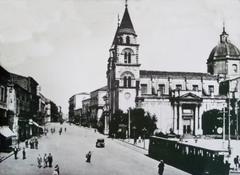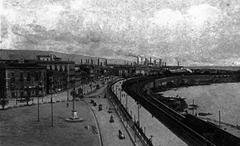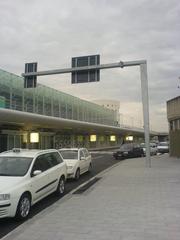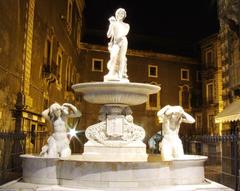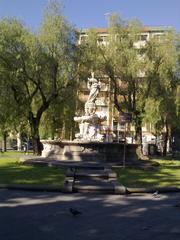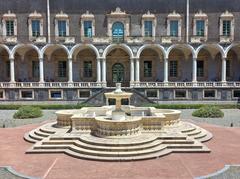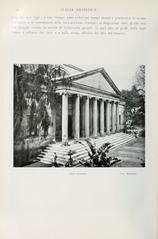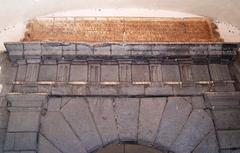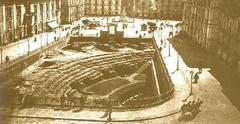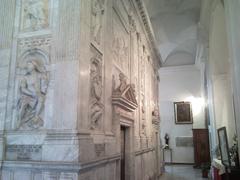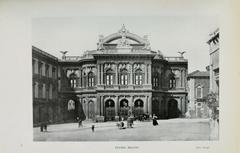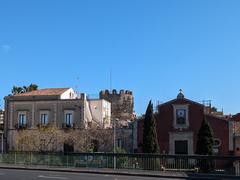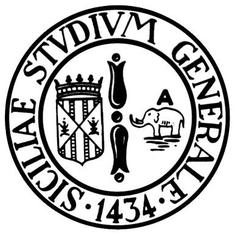Roman Theatre of Catania: Complete Visitor Guide
Date: 15/06/2025
Introduction
The Roman Theatre of Catania, or Teatro Romano di Catania, is a breathtaking archaeological gem in the heart of Sicily’s vibrant city. Blending ancient Greek roots with Roman grandeur, this theatre offers visitors a unique journey through centuries of history and culture. As one of Catania’s most significant historical sites, it stands not only as a testament to the city’s past but also as a living venue for cultural events and performances. This comprehensive guide provides up-to-date information on visiting hours, ticketing, accessibility, guided tours, and nearby attractions, ensuring a memorable and enriching experience for every visitor (Around Catania, Ancient Theatre Archive, MapTurners).
Table of Contents
- Historical Overview
- Visiting the Roman Theatre
- Nearby Attractions
- Frequently Asked Questions (FAQ)
- Conclusion and Planning Tools
- References
Historical Overview
Origins and Early Development
The Roman Theatre of Catania sits atop foundations that date as far back as the 5th century BCE, when the city was the Greek colony of Katane. Archaeological evidence, including sandstone blocks with Greek inscriptions and the theatre’s hillside location, points to an original Greek theatre at this site (Around Catania). Following the Roman conquest in 263 BCE, the theatre was significantly remodeled and expanded, especially during the Augustan-Flavian period, incorporating Roman elements such as the scaenae frons and marble columns (Ancient Theatre Archive).
Architectural Evolution
By the 2nd–3rd centuries CE, the theatre had reached its largest form, accommodating around 7,000 spectators and making it one of Sicily’s grandest ancient venues (Wikipedia). The cavea, or seating area, is divided into three sections and spans up to 102 meters in diameter. The marble-paved orchestra was ingeniously adapted for aquatic spectacles. The richly adorned proscenium and stage reflect Roman opulence.
Near the main theatre stands the Odeon, a smaller semicircular structure used for musical and poetic performances, which remains partly preserved and accessible to visitors (Around Catania).
Social and Cultural Role
The theatre served as a hub for public entertainment, civic ceremonies, and social interaction, embodying both the cultural and political life of ancient Catania. Its advanced stage technology allowed for elaborate productions, reinforcing the city’s status within the Roman Empire (ItalyGuides).
Decline, Rediscovery, and Preservation
With the decline of Roman power and the rise of Christianity, the theatre’s use diminished by the 6th century CE. Over centuries, it was buried by volcanic ash from Mount Etna and built over by urban development (Eternal Arrival). Rediscovery began in the 18th century, with major excavations taking place in the 19th and 20th centuries, gradually revealing the theatre’s impressive remains (Ancient Theatre Archive). Modern conservation has stabilized and made accessible much of the structure, with artifacts on display in nearby museums and visitor centers (Around Catania).
Visiting the Roman Theatre
Visiting Hours
- Open: Tuesday to Sunday, 9:00 AM – 6:00 PM
- Closed: Mondays and select public holidays
- Last Admission: 30 minutes before closing
Note: Hours may vary for special events and seasonally. Always check the official tourism website before your visit.
Ticket Information
- General Admission: €6
- Reduced Admission: €3 (EU citizens under 26)
- Free Entry: Children under 18, Catania residents
- Where to Buy: Tickets are available onsite and online via the official website. Combination tickets with other Catania museums are often offered for added value.
Accessibility
While the theatre is partially accessible, some ancient steps and uneven surfaces may present challenges. Ramps and pathways provide access to key viewing areas. Visitors with mobility concerns should contact staff in advance for detailed support (Life Beyond the Wire).
Guided Tours and Events
Guided tours are offered in several languages and provide rich context on the theatre’s history and architecture. Tours can be booked onsite or in advance. Audio guides and multilingual panels enhance the self-guided experience.
The theatre and adjacent Odeon regularly host concerts, theatrical performances, and cultural events, particularly in summer. Check event schedules online for opportunities to experience live performances in this historic setting (Secret Attractions).
Travel Tips
- Footwear: Wear sturdy, comfortable shoes for uneven surfaces.
- Weather: Bring sun protection and water, especially in summer.
- Timing: Early mornings or late afternoons are best for cooler temperatures and fewer crowds.
- Photography: Personal photography is allowed; professional shoots require special permission.
- Safety: Stay on marked paths and respect preservation barriers.
Best Photography Spots
- Panoramic views from the upper cavea
- The marble orchestra and stage area
- The facade and adjacent Odeon, with the modern city as a backdrop
Nearby Attractions
The Roman Theatre’s central location makes it easy to combine your visit with other Catania highlights:
- Piazza del Duomo: Home to the Cathedral of Sant’Agata and Elephant Fountain
- Castello Ursino: A medieval fortress with archaeological collections
- Via Etnea: The city’s main shopping and dining street
- La Pescheria: Vibrant daily fish market
- Monastery of San Nicolò l’Arena: One of Europe’s largest monasteries, now part of the University of Catania
Frequently Asked Questions (FAQ)
Q: What are the Roman Theatre of Catania visiting hours?
A: Tuesday to Sunday, 9:00 AM – 6:00 PM. Closed on Mondays and certain holidays.
Q: How much are tickets?
A: €6 for adults, €3 for EU citizens under 26, free for children under 18 and Catania residents.
Q: Is the theatre accessible for visitors with disabilities?
A: The site offers partial accessibility; some areas remain challenging. Contact staff for assistance.
Q: Are guided tours available?
A: Yes, in multiple languages. Book onsite or online.
Q: Can I combine my visit with other sites?
A: Absolutely. The theatre is near several major landmarks and combination tickets are available.
Q: Is photography allowed?
A: Yes, for personal use.
Conclusion and Planning Tools
The Roman Theatre of Catania is an extraordinary window into Sicily’s ancient history, seamlessly blending Greek origins, Roman spectacle, and modern-day culture. With convenient visiting hours, accessible ticketing, and a wealth of nearby attractions, it’s an essential stop for anyone exploring Catania.
Travel smarter:
- Download the Audiala app for self-guided tours, up-to-date information, and exclusive insights.
- Follow official tourism channels and social media for event updates.
- Combine your theatre visit with nearby sites for a full immersion in Catania’s heritage.
For the latest visitor information, schedules, and event details, consult the official tourism website.
References
- Around Catania – Roman Theatre
- Ancient Theatre Archive: Catana/Katane
- MapTurners – Catania Guide
- The Tourist Checklist – Catania
- High Heels and a Backpack: Things to Do in Catania
- Wikipedia – Roman Theatre of Catania
- Nomads Travel Guide: Catania
- Secret Attractions: Hidden Historic Sites in Catania
- Life Beyond the Wire: Things to See in Catania
- Eternal Arrival: Two Days in Catania
- ItalyGuides – Roman Theatre
